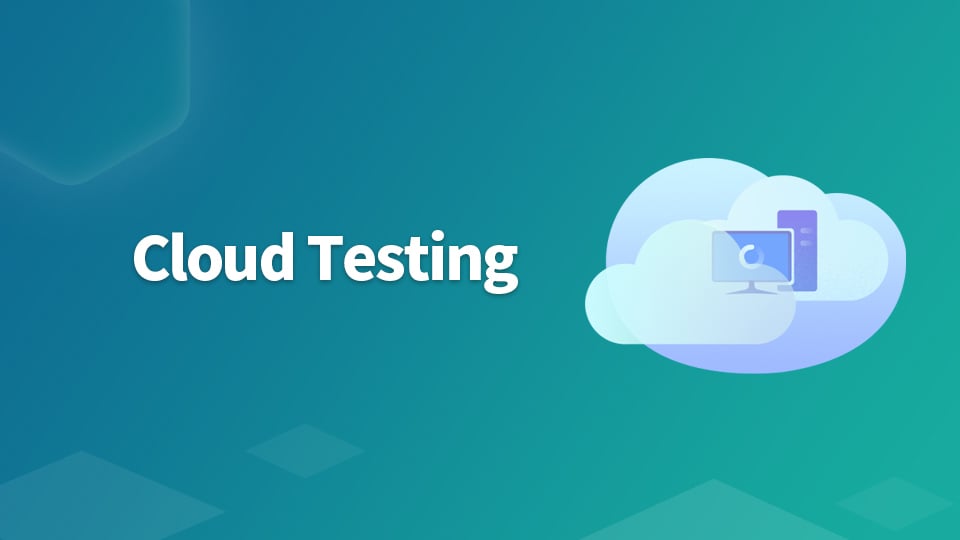What is Cloud Testing?
You’re well aware that applications can be developed in-house and deployed on the cloud, developed and deployed on the cloud itself, or even part of hybrid/shared deployment models. You’re also abreast of the SaaS, PaaS, and IaaS models and how they’re accreted together to form cloud computing. After all, the manifold benefits of the cloud, including multi-tenancy, on-demand services, and scalability, among others, have been extensively touted and discussed in the past few years. But how does the role of cloud testing fair in this picture?
What is Cloud Testing?
Cloud testing is the process of using the cloud computing resources of a third-party service provider to test software applications. This can refer to the testing of cloud resources, such as architecture or cloud-native software as a service (SaaS) offerings, or using cloud tools as a part of a quality assurance (QA) strategy.
It can be valuable to organizations in several ways. For organizations testing cloud resources, this can ensure optimal performance, availability, and security of data, and minimize downtime of the associated infrastructure or platform.
Organizations test cloud-based SaaS products to ensure applications are functioning properly. For companies testing other types of applications, the use of cloud computing tools, as opposed to on-premises QA tools, can help organizations cut down on testing costs and improve collaboration efforts between QA teams.

Why is it needed?
Because of its nature, automated testing is almost always more complicated to set up and execute than manual testing. With an in-house device lab, complications are doubled because of the above reasons.
With cloud automated testing, the process is simplified for the following reasons:
- Cloud infrastructure is set up to facilitate tests for multiple users and teams on various devices simultaneously. QA teams won’t have to share test environments with other teams/projects.
- Even if some tests have to be queued, a cloud-based testing environment worth the cost is schematized to expedite trials without compromising accuracy.
- Efficient cloud testing platforms also possess features to accelerate and enhance collaboration between teams or members of the same teams. This helps monitor all team members’ progress and keeps everyone on the same page about project direction and achievements.
- With automated testing, testers need to access devices and relevant test automation frameworks and technical apparatus such as CI/CD tools, test logs, test execution screenshots, debugging tools, etc.
- Once again, setting this up for an in-house device lab can drain finance, human effort, expertise, and other resources. Automated cloud platforms are already equipped with these abilities, making life easier for devs and testers.
Benefits Of Cloud Testing
The need for cloud testing is easily visible with the benefits that we derive from it, which are far too many. Below we have attempted to discuss the most apparent benefits that explain why the cloud is the need of the hour:
- Dynamic availability of testing environment: The normal testing approach in any organization is to invest in the hardware/software infrastructure required for testing. Almost, many of you will agree that the environment supplied to the testing teams very rarely matches a customer environment on account of rapidly changing requirements, as a result of which it is very challenging for the companies to keep it up. Cloud is the only answer to this problem whereby, users can easily replicate a customer environment and find defects early in the cycle.
- Low cost: Another angle to the previous point is that when companies invest in the infrastructure, the usual cause of it is many of their servers are not utilized all the time. As a result, they may have to incur additional expenses on license renewal. Transitioning to the cloud helps in this scenario as well, as users can commission appliances as and when they want, thereby saving huge costs for an organization.
- Easily customizable: With the use of the cloud, it’s an easy task for organizations to emulate an end-user-centric environment by customizing it as per the usage thereby, saving cost and time. Test teams can easily perform load and performance testing scenarios in various permutations and combinations like – different OSes, browsers, configurations, etc.
- Scalability: This is one of the most attractive features of the cloud whereby the computing resources can be increased or decreased wherever it is necessary. This is widely used in situations where business requirements keep altering frequently.

Some challenges
- Security and privacy of data. As with the broader use of the cloud, security, and privacy concerns linger with cloud testing. In addition, as the cloud environment is outsourced, the customer loses autonomy over security and privacy issues.
- Multi-cloud models. Multi-cloud models that use different types of clouds — public, private, or hybrid — sometimes across multiple cloud providers, pose complications with synchronization, security, and other domains.
- Developing the environment. Specific server, storage, and network configurations can lead to testing issues.
- Replicating the user environment. Though the application, ideally, would be tested in a similar environment to that of end users, it is not always possible to avoid discrepancies.
- Testing across the full IT system. Cloud testing must test the application, servers, storage, and network, as well as validate these test interactions across all layers and components.
- Test environment controls limitations. Aspects that should be tested may be beyond what the test environment can control.
- Potential bandwidth issues. Bandwidth availability can fluctuate due to the provider’s resources being shared with other users.
Conclusion
Most organizations are adopting cloud testing over traditional testing because of the easy deployment, scalability, unlimited resources, geographical independence, and high productivity. But overcoming the challenges in cloud testing is also much more important. More research must be done to address these challenges. New techniques and solutions should be created to support more scalable, affordable, secure, and sophisticated cloud testing.